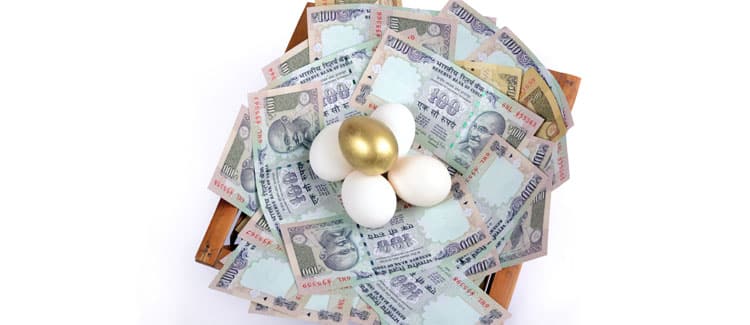Profit Before Tax
Profit before Tax (PBT) is one of the crucial attributes to measure the financial stability of a firm or company. It is the amount of profit left with a firm or corporation bound to be taxed under the Income Tax Act of 1961. The shareholders of a company cannot claim any right on the PBT as it is yet to be taxed by the government of India. Therefore, the government of India is its first shareholder.
Significance of PBT
The significance of PBT can be understood by interpreting the following attributes:
-
Interpretation of Company
PBT allows shareholders of a company or organisation to measure the growth rate of a company after evaluating the earning before tax.
-
Potentiality of Organisation
The stakeholder or a company evaluates the PBT to analyze the efficiency of a firm to convert the revenue into profit.
-
Comparisons
PBT allows the shareholders to draw several comparisons about the organisation by evaluating the PBT over several years. For example, the shareholders can interpret the rise and fall of an organisation by taking into consideration the PBT of the last five to ten years.
Similarly, the investors can also determine whether to stay or leave the organisation if it does not fetch extra profits. On top of that, the stakeholders can also draw comparisons between different firms and companies by reviewing their PBTs.
-
Competency
The investor can determine the competency of an organisation to generate profits for shareholders after paying the tax. They can also calculate their interest upon deduction of the tax rate.
-
Control of Finance
The PBT allows organizations to determine if they need to investigate finances if the company generates less than expected profits.
PBT Formula
The PBT formula is necessary to calculate profit before tax.
One can follow the below-mentioned steps to calculate the PBT:
-
Financial Data
A company must gather or collect financial data on the income earned by the company. It is because the revenue of an organisation comes from different sources. It is essential to analyze income from various sources, such as rental income, sales income, and income from other sources.
-
Evaluation of Expenses
To earn an income, a business is subject to make several expenses. Therefore, the business needs to calculate the expenses incurred in the operation of the organisation. The expense includes debt, rent, utilities, and the cost of goods sold. It further consists of the wages that have been paid and which are yet to be paid, along with the health and charitable contribution.
-
Subtraction
The deductible expenses need to be subtracted from the earned income to evaluate the profit before tax.
For which, the formula for PBT is:
Profit before tax = Revenue - Expenses
It is important to note that the expense does not include the tax rate. Hence, the assessor should avoid levying tax rates on profits. The tax rate is added to calculate the profit after tax.
Illustration of PBT formulae:
Let us understand the calculation of profit before tax with an example.
An ABC limited has INR 12,00,000 in sales during an assessment year. It incurred INR 2,00,000 on the cost of goods sales. Further, it claimed depreciation of INR 1,00,000 on the machinery, furniture & fixtures and other tangible assets.
Further, incurred a cost of doing business of INR 1,50,000 during the same year. Therefore, the interest expense is determined as INR 50,000. Thus, the company wishes to measure the PBT.
From the aforementioned data, one can fetch the following:
-
Revenue = INR 12,00,000 (Total sales)
-
Depreciation = INR 1,00,000
-
Cost of Goods Sold = INR 2,00,000
-
Cost of Doing Business = INR 1,50,000
-
Interest Expense = INR 50,000
Assessor needs to apply the formula:
Profit before tax = Revenue - Expenses to calculate the PBT
First, one must evaluate the revenue and expenses to proceed further.
From the above context, one may evaluate the following:
Revenue = INR 12,00,000
Expenses = INR (2,00,000 + 1,00,000 + 1,50,000 + 50,000)
= INR 5,00,000
Profit before tax = Revenue - Expenses
= INR 12,00,000 - 5,00,000
= INR 7,00,000
Hence, the tax shall be applied to INR 7,00,000.
Importance of PBT
-
One can determine the growth and capabilities of an organisation by interpreting the PBT. In addition, employers can also determine the internal and external management of their organisation and comprehend the financial development and data of the firm.
-
The stakeholders or investors may evaluate the take-home profit upon levying the tax rate on the PBT.
-
To evaluate PAT (Profit After Tax), it is essential to determine the PBT (Profit Before Tax).
-
After evaluation of the PBT of a firm, the management may draw comparisons against the operation of different firms of the same industry. They may analyze if their technique is up to the mark or need changes. In addition, they may discover several alternatives they need to adapt upon determining the PBT.
-
The company is likely to attract more investors if the PBT is higher than the previous years. But, at the same time, it may lose them if the PBT is declining.
-
The investor may agree to more allocations of their financial assets. For example, if the PBT competes financially with other organizations in the same industry, the shareholders are likely to buy more shares. On the other hand, they may reallocate if the organisation does not perform well.
Benefits of PBT
-
PBT shows the performance of a company during a financial year. It reflects its financial stability among other companies.
-
PBT is opposed to PAT. So it can measure the performance more efficiently.
-
The company may determine its debt obligation after evaluating PBT.
Disadvantages of PBT
-
It does not give an accurate account as the profit has yet been taxed.
-
Tax rates are not alike in every nation. Hence, the final profit might be distinct.
Final Words
Profit before tax refers to the total earning of an organization before discharging its tax liability. Every organization is bound to calculate the PBT to pay taxes. PBT is utilized to compare the profitability of the firm. Further, one may calculate PBT by applying its formula.
FAQ's
-
What is the difference between profit before tax and profit after tax?
- Profit before tax is the taxable income earned by an organization. At the same time, profit after tax denotes the income left after discharging the liability of paying tax.
- The government of India or tax collection authority owns the first right to profit before tax and then comes the shareholders. However, in the case of profit after tax, it is regarded as the income ready to take home by the shareholders.
- Profit before tax is evaluated by applying PBT = Revenue - Expenses
- At the same time, PAT is calculated by applying PAT = Total profit – Tax
-
How to calculate PBT?
One may calculate PBT by applying its formula
PBT = Revenue - Expenses
Let us understand with an example.
A firm XYZ limited generates a total Revenue of INR 5,00,000 and incurs a total expense of INR 50,000 on the cost of goods sold along with a depreciation cost of INR 50,000.
So, the revenue of the firm shall be regarded as INR 5,00,000.
Whereas total expenses shall be,
= INR 50,000 + INR 50,000
= INR 1,00,000
Upon applying the PBT formula, one may get
PBT = INR 5,00,000 - INR 1,00,000
= INR 4,00,000 -
What Are the Benefits of Evaluating PBT?
- One can determine the growth rate of the company.
- The investor may decide whether or not to continue investing in the same firm based on PBT.
- The company can interpret its merits and demerits upon calculating profit before tax.
- The calculation of PBT is easy as one is only required to deduct the expenses from the total Revenue.
- PBT allows the organisation to interpret its strength and weaknesses.
-
What are the expenses excluded from revenue while calculating PBT?
The following expenses must be excluded to evaluate PBT:Cost of Goods Sold
The cost of goods sold includes every expense incurred by a firm while selling the goods, such as advertisement Cost, warehouse rent etc.
Depreciation
An organisation must decrease the depreciation value of machinery, furniture, fixtures and other assets to calculate the profit before tax.
Bad Debts
The organisation might possess some bad debts. Therefore, the amount of bad debts which are bound to be written off is also required to be deducted.
Research and Development Cost
The cost of research and development incurred in the invention of a product, overhead costs, and selling and administrative expenses are subject to exclusion to calculate the net income.
-
What are PBT full form and PBT meaning?
PBT full form and PBT meaning are crucial to know to understand the concept of PBT. The profit before tax is the total profit of the firm after deducting expenses from the total Revenue but not deducting tax liability of an organization.
˜The insurers/plans mentioned are arranged in order of highest to lowest first year premium (sum of individual single premium and individual non-single premium) offered by Policybazaar’s insurer partners offering life insurance investment plans on our platform, as per ‘first year premium of life insurers as at 31.03.2025 report’ published by IRDAI. Policybazaar does not endorse, rate or recommend any particular insurer or insurance product offered by any insurer. For complete list of insurers in India refer to the IRDAI website www.irdai.gov.in
*All savings are provided by the insurer as per the IRDAI approved insurance plan.
^The tax benefits under Section 80C allow a deduction of up to ₹1.5 lakhs from the taxable income per year and 10(10D) tax benefits are for investments made up to ₹2.5 Lakhs/ year for policies bought after 1 Feb 2021. Tax benefits and savings are subject to changes in tax laws.
¶Long-term capital gains (LTCG) tax (12.5%) is exempted on annual premiums up to 2.5 lacs.
++Source - Google Review Rating available on:- http://bit.ly/3J20bXZ


- SIP Calculator
- Income Tax Calculator
- Compound Interest Calculator
- NPS Calculator
- Show More Calculator
Income Tax articles
Explore the popular searches and stay informed
- LIC
- Investment Plan
- Annuity Plan
- Child Plan
- Pension Plan
- ULIP Plan
- Child Investment Plan
- SIP
- LIC Calculator
- SIP Calculator
- SBI SIP
- ULIP Calculator
- Sukanya Samriddhi Yojana
- Best SIP Plans
- Retirement Planning
- SBI SIP Calculator
- HDFC SIP Calculator
- Sukanya Samriddhi Yojana Interest Rate
- NPS Interest Rate
- Deferred Annuity Plans
- SBI Annuity Deposit Scheme Calculator
- Immediate Annuity Plans
- Post Office Child Plan
- Prime Minister Schemes For Boy Child
- Government Schemes for Girl Child
- 50k Pension Per Month
- Atal Pension Yojana Calculator
- Best Pension Plan in India
- CIBIL Score
- 1 Crore Term Insurance
- Best Term Insurance Plan
- Term Insurance for Women
- Term Insurance for NRI
- Term Insurance
- Term Insurance Calculator
- Life Insurance
- Term Insurance with Return of Premium
- Whole Life Insurance
- Term Insurance vs Life Insurance
- What is Term Insurance
- Life Insurance Calculator
- 5 Crore Term Insurance
- 2 Crore Term Insurance
- 50 Lakh Term Insurance
- Term Insurance for Housewife
- Benefits of Term Insurance
- Term Insurance Terminology
- Medical Tests for Term Insurance
- Term Insurance for Self Employed
- Claim Settlement Ratio
- 10 Crore Term Insurance
- Term Insurance for Smokers
- 1.5 Crore Term Insurance
- Zero Cost Term Insurance
- FIRE Calculator















